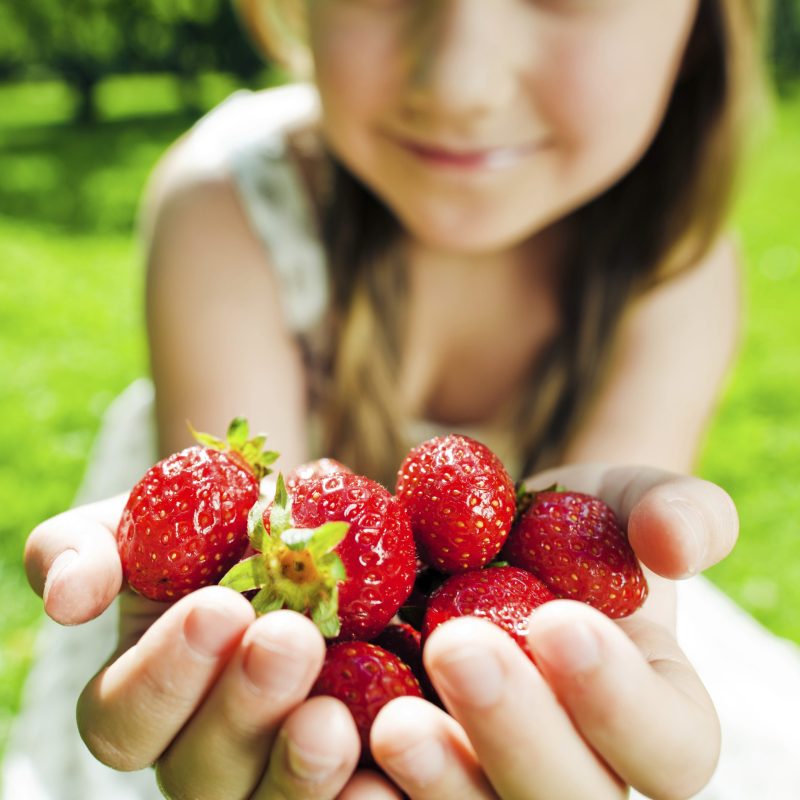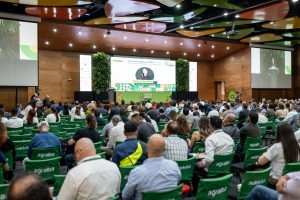Interfresa, the Interprofessional Andalusian Strawberry Association, presented the report: ‘Water in red berry farming in the province of Huelva’. This study analyses the sector’s current situation; it details the improvement prospects in water actions; and it sets forth specific actions to promote the sustainability of the Andalusian red berry crop.
Taking the total surface area in the province of Huelva into account, 151.172 hectares of the soil is devoted to agricultural use, of which around 35% uses the water. 5% is used for irrigated farming and, specifically, red berries represent just 1.5% of the surface area in the province. With this context, the report spotlights the importance of the Huelva berry sector (Huelva produces 98% of Spanish berries and 30% of those grown in the EU), and it explains the distribution and use of the water resources.
Therefore, the study contains an explanation of the province’s hydrographical division, which is separated into three administrative boundaries: the HD of the Guadiana; the HD of the Guadalquivir, and the HD of Tinto, Odiel and Piedras rivers. The water demand for all the activities in the province – for household, industrial, irrigation, livestock and recreational uses, reaches 322 hm3. Of this amount, agricultural demands take up 229 hm3 per year.
“Huelva’s water resources come from surface water, mainly from rivers, reservoirs and lakes, and from underground water, which needs to be extracted from the aquifers through drilling and wells. 69% of the demand for water for irrigated agriculture in Huelva is taken care of using surface water resources, with citrus fruit (35%) and red berries (25%) being the most important crops,” comments Pedro Diaz, agricultural engineer and author of the report.
This study also indicates that in order to correct the structural limitations present in Huelva’s water exploitation system, the infrastructures set forth in the hydrological planning to divide the San Silvestre Tunnel, (the conclusion of which is planned for 2027), the Alcolea reservoir (2027), the Pedro-Arco reservoir (2029), the Coronada reservoir (20399 and the Bocachanza II reservoir (2039) must be carried out.
The use of these approved infrastructures in the province would allow the current resources of the system in Huelva to increase by 111%, which would make it possible to consolidate the irrigated surface area, amongst other uses. “The volume of the transfer would allow 30% of underground water to be replaced by surface water to cover the County’s agricultural demands,” Pedro Díaz explains. “With the rise in temperatures and water shortages, it is essential to develop new water infrastructures that can guarantee the continuity of the region’s agricultural activity. And the consolidation of the Special Drought Plans must also be taken into consideration, where the strategies for situations of drought and water shortage are established,” he adds.
Pedro Marín, General Manager of Interfresa, explains that “to ensure that the future of red berry farming is possible, firstly, the water resources must be increased. Always in this order and never the other way round. This is the reason why these plans must be fulfilled in order for the sector to be able to maintain its competitiveness and continue being a generator of employment and wealth for Huelva.” During the presentation, Marín decided to emphasise the solidarity of the farmers in the province as well. “The organisations of the water basins are the ones that plan a transfer of resources, whenever it is justified from the social, economic and environmental points of view. In our sector, the union and solidarity of the farmers from the different areas is particularly significant,” he underscores.
The report ‘Water in red berry farming in the province of Huelva’ also shows how, in recent years, the sector has pursued innovation, bringing technology into the service of the crops. In the red berry sector, for example, a high degree of modernisation in the irrigation installations has been achieved. In fact, localised or drip irrigation is used by 100% of the red berry commercial farms in Huelva.
The digitalisation figures for the irrigation systems are very high, and this allows the water and nutrients for the crops to be controlled. It is estimated that 80% of the irrigation developments are already supported by precision farming in order to make decisions regarding efficient irrigation. The investment in all this equipment could be estimated to be between 7,000 and 9,000 € per hectare.
In spite of all these advances, the sector acknowledges that there is still a great deal to be done. Proof of this is the Nitrate Footprint (NF) that endorses the proactivity and environmental sensitivity of the Huelva agricultural sector. “The first red berry farm in the world, consisting of 80 hectares, to receive this recognition, is located in Huelva,” Díaz concludes.
















